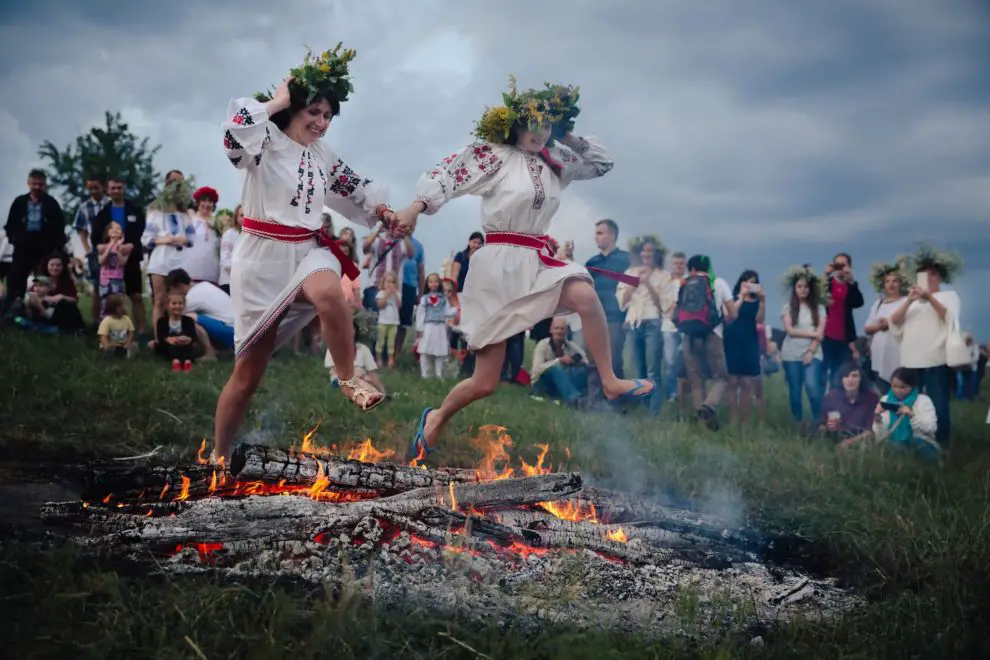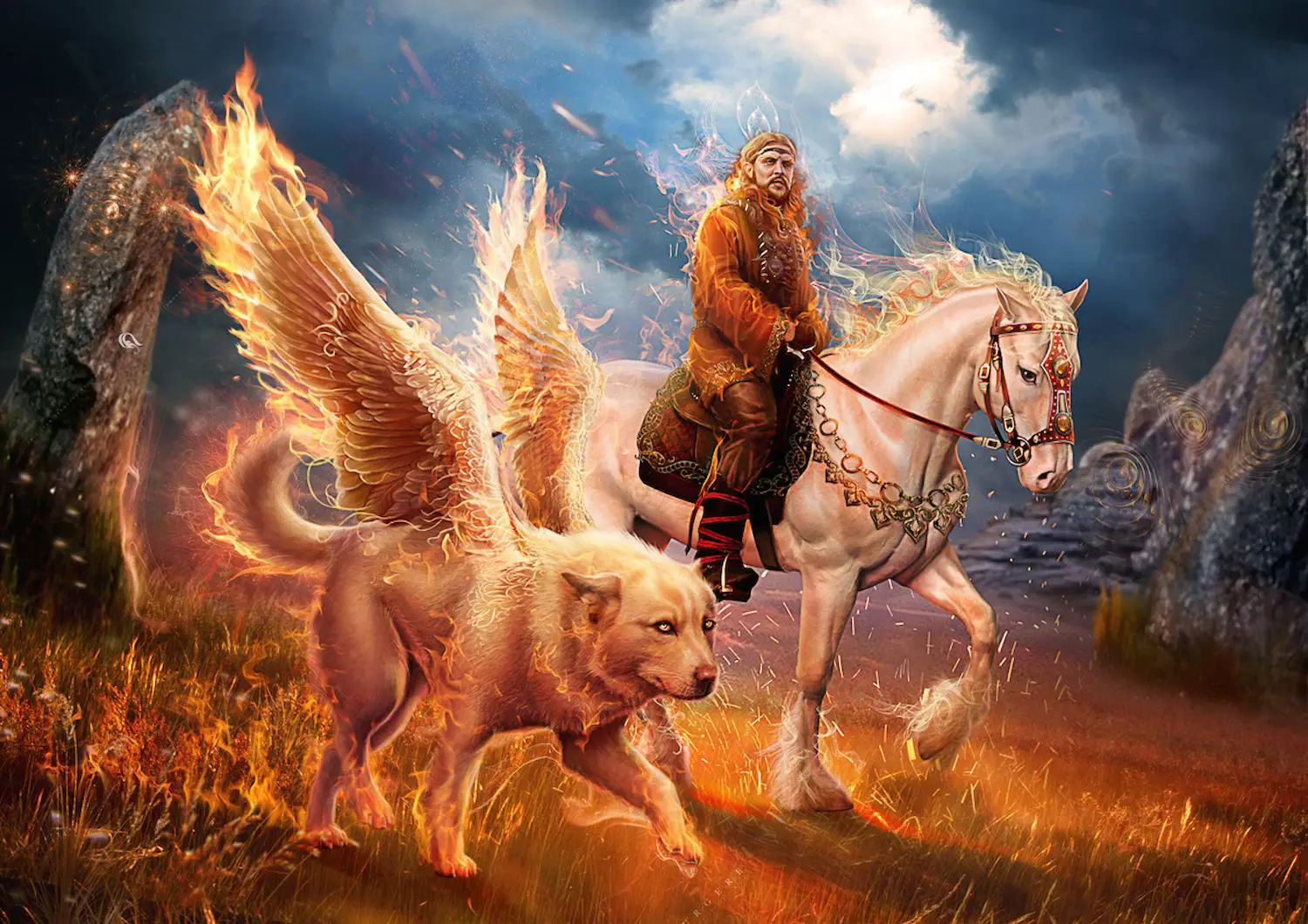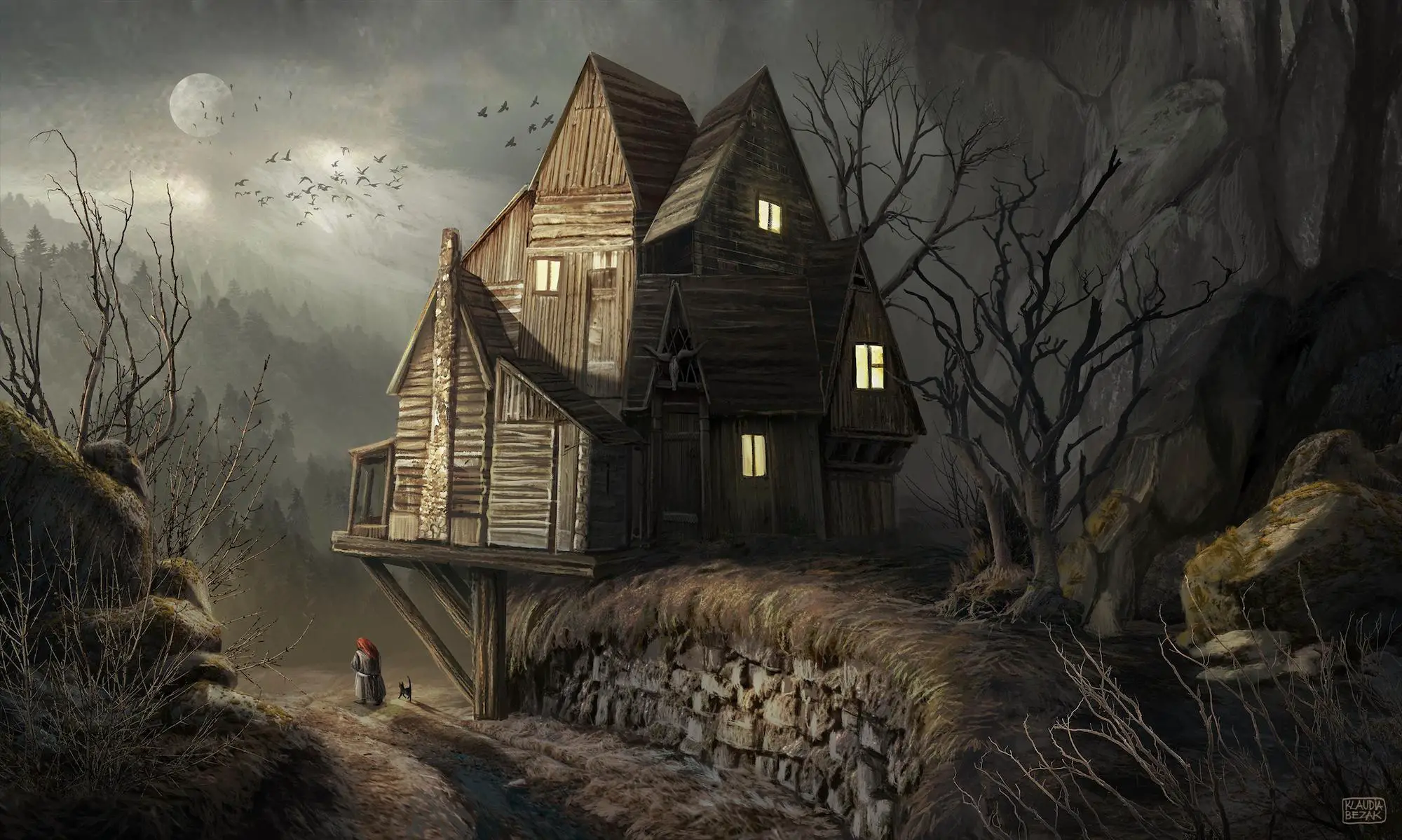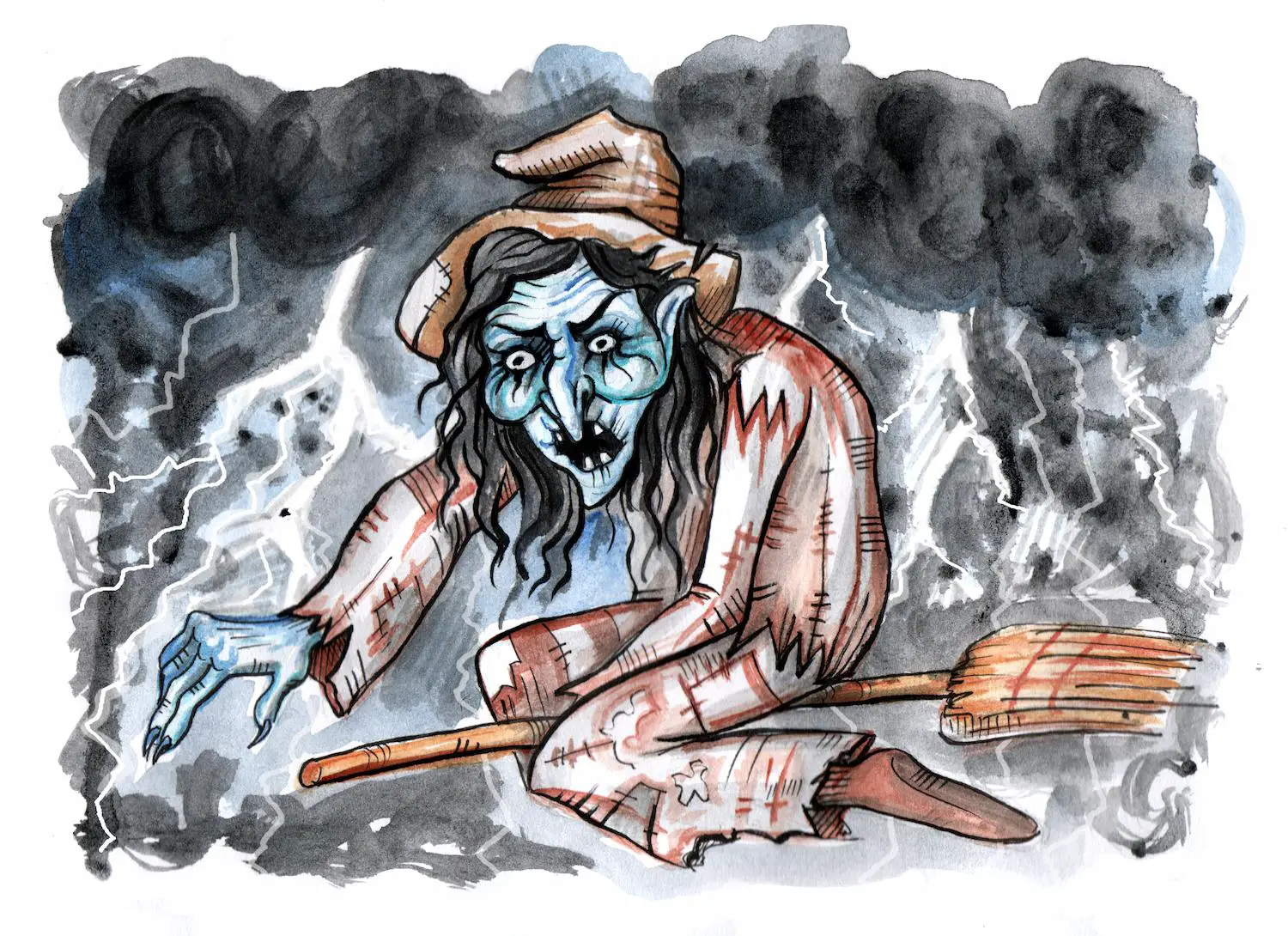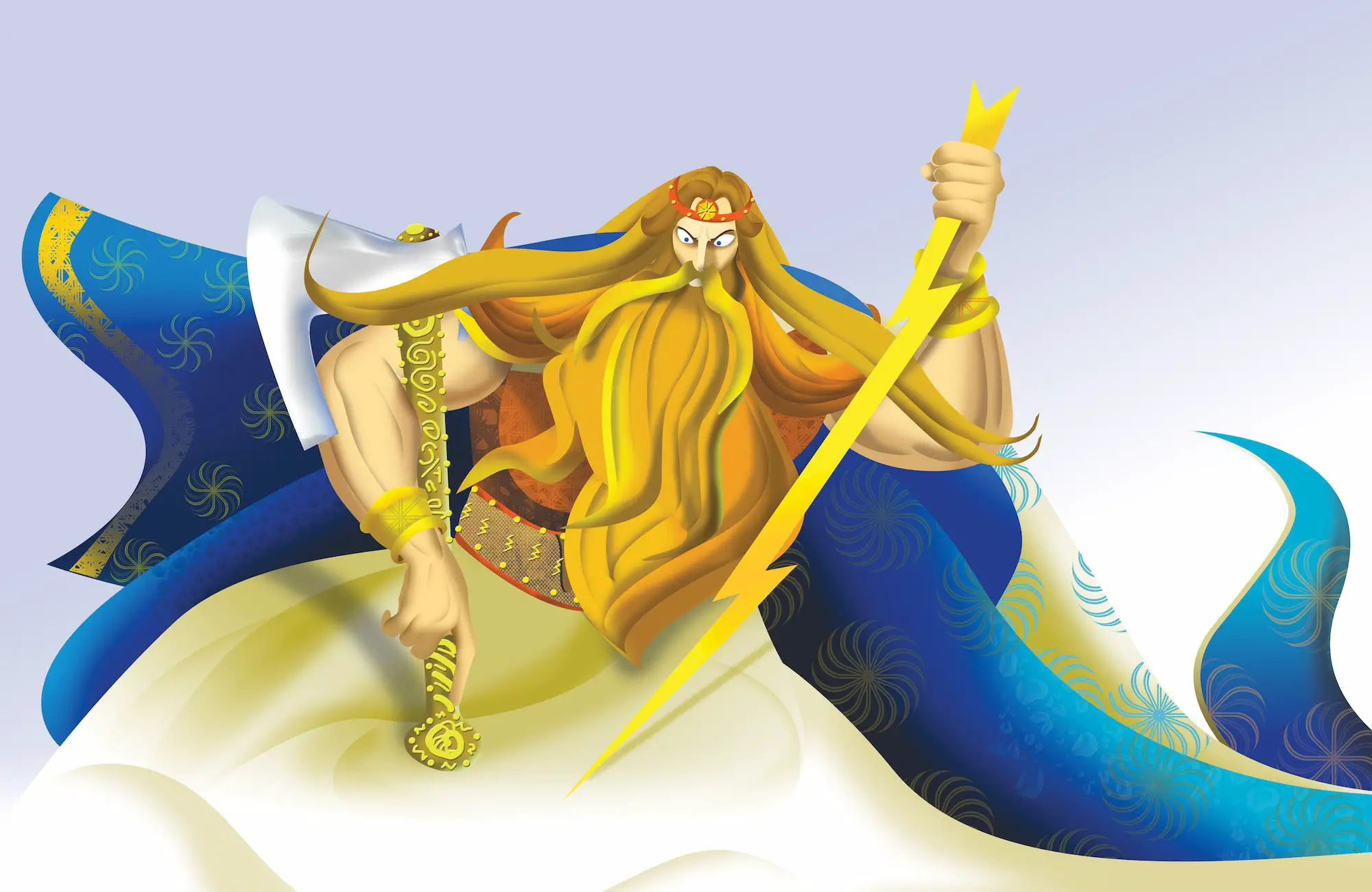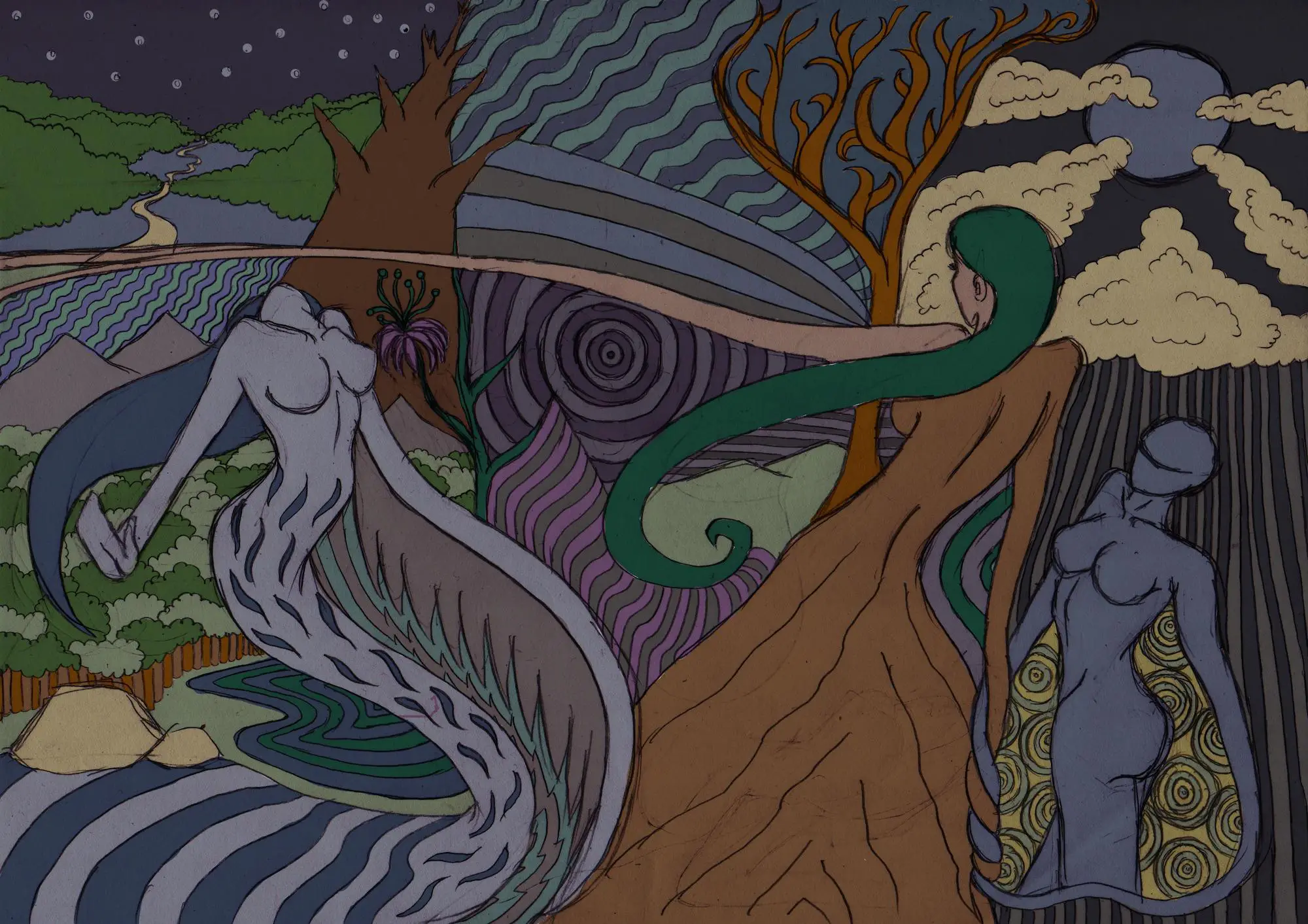There are no first-hand records for the study of Slavic mythology prior to Christianisation.
According to historians, the scope of Slavic religious beliefs and traditions was passed down orally (over generations) and obviously, much of it was altered when Slavic religion was swapped for Christianity.
Prior to the period of Christianisation, most of the records about Slavic mythology and Slavic religion were written by non-Slavic missionaries and historians who portrayed Slavic beliefs and rituals as pagan.
The existing historical records note that Slavic paganism has many common traits with other religions that are in the group of the Proto-Indo-European religions [1].
Nevertheless, it is interesting to mention that certain elements of ancient Slavic folklore and pagan festivals can be witnessed even today (in festivals, customs, songs, and stories in the cultural heritage of all Slavic nations).
In this article, you are going to learn about Slavic paganism, its history and rituals.
Table of Contents
Written Sources on Slavic Paganism
One of the most valued sources with references to the Slavic pagan beliefs (more specifically, Eastern Slavs) is the “Slavic Primary Chronicle”.
This manuscript was, reportedly, compiled at the beginning of the 12th century. You can find the descriptions of the time period before the Christian Baptism of Kievan Rus in this manuscript [2].
Two deities are mentioned that were central to the Slavs at the time – the god Perun and the god Veles. These deities are also mentioned in peace treaties (in the early 10th century) between the Byzantine Emperors and the Eastern Slavs.
Perun and Veles
Perun is the god of thunder and lightning. He lives in the heavens and is characterized by fierceness and dryness. Perun is placed on the highest branch of the World Tree from which he rules the world.
Veles, on the other hand, is the god of waters, the protector of the Earth (and wetlands). He is also the lord of the underworld who rules from below (from the roots of the World Tree).
Perun is mentioned in rituals related to harvest as he is the provider of rain but also the god of war and weapons. His counterpart Veles is the god of cattle and shepherd, who is also associated with magical rituals.
The explorer Nestor the Chronicler, father of Russian history, described a state pantheon that was introduced by Prince Vladimir in Kyiv in 980 CE [3].
The Pantheon of Prince Vladimir
This pantheon included the gods Dazhbog, Hors, Stribog, Simargl and Mokosh.
The god Dazhbog was a personification of the Sun. It was believed that he is the god of blessings and the son of the god Svarog [4].
Slavs performed special rituals in his name during the period of harvest.
The god Hors was also considered a Sun god and it was believed that he has a magical power to bring light and prosperity to the world.
The god Mokosh, also known as Mokusha or Mokush is the goddess who both gives and takes life. She is presented as a spinner of the thread of life and a provider of the water of life.
The god Simargl was presented as a winged dog, a guardian of the seed and new shoots. He was celebrated through rituals performed in the Ruslanaia week (when people pleaded for rain that would help their crops).
Striborg was considered the god of wind, storm, and destruction.
West Slavic Paganism
The most prolific written records of Slavic Paganism are those of the West Slavs (particularly the Wendish and Polabian) who were forcibly Christianised at the end of the 12th century.
Most of these texts were written by German missionaries and priests. It is worth mentioning that almost none of these scholars learned any of the Slavic languages.
Another valuable document is the “Chronica Slavorum” written in the late 12th century by the German priest Helmold who mentioned the “devil” deity Chrnobog, the goddess Zhiva, the god Perun, and the god Svanevit (worshiped on the Rugen island and was the most important god to the Western Slavs).
Helmold also wrote about several unnamed gods with multiple heads.
Pagan Statues and Other Remains
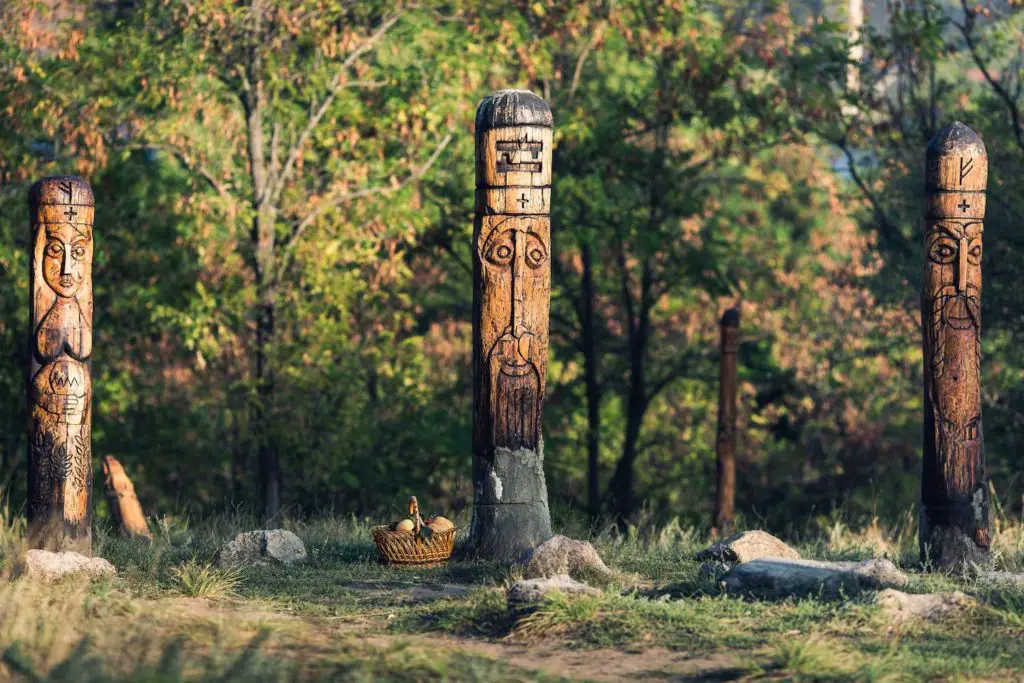
In 1848, on the bank of the river Zbruch, a number of statues of Slavic deities were discovered.
One of them was a tall stone statue that resembled the Slavic god Svanevit.
Other pagan statues of Slavic tribes were discovered in other places. For example, a small four-headed statue from the 10th century was found amongst the ruins of Preslav, (once the capital of Bulgarian tsars).
There was also a human-sized wooden statue (with two heads) discovered on an island in the Tollensesee lake.
According to the Russian archaeologists and explorers of Russian mythology, all the archaeological remains have a lot of elements and aspects in common.
The written reports of Christian missionaries indicate that the Slavic mythology emphasized the worship of deities with several aspects.
This is proven to be true when considered that the statues of gods have multiple faces and the remains of the shrines reveal multiple sacrificial altars for worshiping polycephalic gods.
Pagan Elements in Slavic Folklore
Between the 7th and the 12th centuries, various Slavic populations were Christianised.
The majority of the rural Slavic population relied on old myths regarding religiosity, so Christian priests and monks, especially in Russia, had to fight against the so-called Russian paganism or “dvoeverie”.
Eventually, the Russian peasants accepted new Christian holidays and masses as well as the observance of baptism.
On the other hand, they kept on worshiping old pagan cults and ancient rites as they didn’t consider Christianity as a replacement of the old Slavic paganism but its extension.
For rural pagans, Christianity offered hope and salvation in the afterlife. However, in order to survive in the earthly world, have a bountiful harvest and protect the cattle, they had to rely on the old religious system with protective deities, fertility rites and rituals.
The mythological view of the world which explained natural phenomena could not be easily erased. Therefore, certain Christian saints and martyrs replaced pagan deities of a certain cult.
Because of this, “replacement” features of the past religious systems were preserved and often intertwined with the new interpretations.
Also Read: Slavic pagan holidays
The folk beliefs, understanding and pagan traditions of all Slavic people are perhaps the richest source for the reconstruction of the ancient pagan beliefs. The only problem is that much of the mythological aspects are likely to have been lost or altered through time.
The way festivals are celebrated or stories are told or the way some songs are sung is all done in accordance with tradition.
The cults of some old pagan Slavic gods and deities were often combined with the worship of new Christian saints (and the old rituals blended with new Christian holidays).
This understanding of Slavic paganism has led folklorists and historians to observe Slavic paganism through two standpoints in regard to folklore.
The first view considers fairy tales about fantastic characters and creatures like Baba Yaga, Alkonost, Firebird and others, as well as tales and songs of legendary heroes and superstitions about spirits and demons like rusalkas, domovoi, vampires, vodyanoy and Vilas.
Many of these contain elements of old mythical structures although they are not myths themselves as they do not contain religious significance and sacral meaning. In addition, most of these vary among different Slavic populations.
The second view is related to the folk celebrations of a variety of Christian festivals and popular beliefs.
For example, the saint St Elijah the Thunderer is a popular saint in many Slavic countries and it is believed that he is a replacement of the ancient god Perun- the god of thunder.
Moreover, other cults of saints also show traces of ancient deities such as St Mary, St Nicholas, St Vitus, St Blais and St George.
A great number of folk celebrations, including the spring feast of Jare or the summer feast of Ivan Kupala are associated with Christian holidays and contain an abundance of pre-Christan elements.
Pagan Slavic Festivals and Rituals
The pagan Slavs organized their belief system through observing rituals (according to myths) that were cyclical in nature and were repeated every year.
The Slavic mythology depended on the specific pre-Christain calendar concept.
The Slavic year was lunar and thus began in early March, similar to other Indo-European cultures.
The names for the last night of the old year and the first day of the new year are reconstructed as Velja Noc (Velja Notj)/Velik Dan(Velikŭ dĭnĭ) (Great Night/Great Day).
After Christianization, these names were probably passed onto Easter. In Slavic countries belonging to Orthodox Churches, Easter is known as Velik Dan/Great Day, whilst amongst Catholic Slavs, it is known as Velika Noc/Great Night.
Historical records also reveal the presence of religious leaders of processions, known as “shamans” who wore animal masks and coats of sheep wool on the last day of the year.
A group of men with similar attire and masks would gather in groups and sing loudly around the village, attracting the spirits of dead ancestors to celebrate the new year, together with them.
Spring Festival
A big spring festival was also observed. It was dedicated to the god of fertility and vegetation, Jarilo. Young girls and men would walk around villages, carrying green branches of flower wreaths as symbols of new life and fertility.
They visited homes within a village, recited songs at the doorsteps and blessed households with traditional fertility rites.
Each procession had a leader who would ride a horse. The custom also included the decoration of eggs which also symbolized the beginning of new life. This tradition was later passed on Christian Easter.
Summer Festival
When it comes to the summer festival and traditions of pagan Slavs, the emphasis was put on the summer solstice festival. This holiday was celebrated lavishly, mainly as a big wedding, and according to some historical sources, was followed by a general orgy.
The night before the summer solstice, people gathered for a big feast and lit large bonfires. The young people coupled and danced in circles or jumped across the fire.
The young girls traditionally made wreaths of flowers and fern (the sacred plant for this occasion) which they later tossed into the river.
Kupala Ritual
The festive night also included the ritual of bathing, therefore this festivity today is also known as Kupala (kupati = to bathe).
This ritual later blended with the folk tradition of the Christian patron saint John the Baptist.
These summer festivals celebrated the wedding of the god of fertility who would bring prosperity and a rich harvest.
Summer celebrations didn’t end there, though.
In the middle of the summer, ancient Slavs celebrated a festival in honor of the god of thunder- Perun.
According to historical sources, this was the most significant holiday of the year and reportedly, human sacrifices were included. After Christianity, this celebration was turned into the festival of Saint Elijah.
Harvest Day
As far it is known, the end of the harvest was celebrated at the temple of Svantevit on the day of present-day Rugen. The traditional celebration included a ritual during which people would gather in front of the temple, where the priests would place a massive wheat cake.
The priest of the highest rank would stand behind the cake and ask the people whether they were able to see him.
Then, he would plead for a greater, more bountiful harvest next year, so big that the people would not be able to see him behind the ritual cake.
Winter Festival
A festival of the winter solstice was also observed and later, it was probably replaced with the Christian Christmas. Therefore, in many of the Slavic countries, Christmas is called “Bozic” which translates to “little god”, as “bog” means god.
The name of this holiday is probably of pagan origin and indicated the birth of a new, young god of the Sun that would be the successor of the old solar deity during the longest night of the year.
Slavic pagan tradition identifies Svarog as the old, weakened sun god, while Dazhbog was his young and new son.
Slavic Paganism and Pan-Slavism Today
In the last several decades, Slavic paganism has gained some extra popularity among the Russian, Belarusian and Ukrainian public. The main reasons for this are many websites and organizations, focused on revising and examining Slavic mythology.
Some of these organizations (or individuals) are making an open plea to the public and asking them to come together in order to “finally return to the roots of their homeland”.
Most of these neopagan movements take place in Russia, Belarus and Ukraine but they are also present in other Slavic countries such as Poland, Serbia, Slovenia and Croatia.
As a movement, Pan-Slavism is not new but an old movement that stems from the 19th century.
Its central idea is grounded in the so-called common ethnic background among Slavs from Eastern and East-Central Europe. The intended unification of these people was imagined as a step toward achieving common cultural and political goals.
The movement was originally formed by West and South Slav intellectuals, scholars and poets who studied the Slavic folklore and vernaculars of the Slavic people.
The first center of Pan-Slavism was Prague where Slav antiquities and philology were studied.
Neo-Slavism
Neo Slavism is a less known short-lived movement that originated in Austria-Hungary at the beginning of the 20th century and spread to the Balkan countries (as well as in Russia).
The Neoslavists promoted cooperation between Slavic people in order to resist Germanization but also to modernize and implement liberal reforms as they intended to create a democratic community of Slavic nations without the dominating Russian influence.
Unlike Pan-Slavism, Neo-Slavism did not divide Catholics and Orthodox churches. Its main idea was not the creation of a single Slavic state. This movement was mainly interested in a non-violent approach and practice regarding its agenda.
Sources
- https://www.academia.edu/10255821/Slavic_mythology
- https://medium.com/@alexander.rybakoff/baptism-of-kievan-rus-why-did-it-happen-2b8e43eb5f50
- https://russiapedia.rt.com/prominent-russians/history-and-mythology/nestor/
- https://www.rodnovery.ru/attachments/article/526/slavic-pagan-world.pdf







